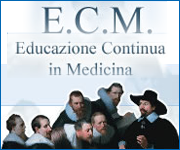|
Title: A new physical therapy approach for Parkinson’s Disease axial deformities: a pilot study
Vincenza Montemurro, Fellow1, Marcella Valente, Researcher1, Rossella Scatozza, Phd1, Elisabetta Sinibaldi, Physiotherapist1 and Giuseppe Meco, Researcher1. 1Neurology and Psychiatry, "Sapienza" University of Rome, Rome, Italy, 00185.
Objective: To evaluate the efficacy of a specific rehabilitation program (Progressive Modular Rebalancing with Neuromuscolar Facilitation) on postural alterations and motor performance of Parkinson’s Disease (PD) patients.
Background: In advanced PD characteristic symptoms may be associated with postural deformities. Camptocormia, described as stooped or bent posture, is the most recognised type of deformity. Pisa Syndrome, referred to a marked lateral flexion of the trunk, is less recognized but more disabling.
There are many researches on the possible benefits of rehabilitation and exercise therapy in PD patients, but there are few studies about specific rehabilitation approaches.
In our study we examined the role a specific rehabilitation technique on PD postural deformities.
Methods: To examine the effects of RMP program (individual 60-minute-sessions, 2- days-a-week for three months) on postural alterations and mobility of 14 PD patients with Camptocormia, and 4 PD patients with Pisa Syndrome.
Patients with severe osteoporosis, serious heart and respiratory problems, dementia and significant fluctuations in motor response were excluded.
Patients were evaluated using the Unified Parkinson’s Disease Rating Scale motor subscale (UPDRS-III), Webster Rating Scale (WRS) – Posture, Tinetti-Gait Scale, Protractor for Measuring degrees.
Therapy was not changed during the three months of rehabilitation.
Results: After the treatment a significant improvement in motor performance by UPDRS-III was observed ( - 6.28 points, p = 0.001). This finding is also confirmed by the significant improvement in Tinetti-Gait scale (-3.22 points, p = 0.001).
A significant decreases in anterior trunk flexion (-18,91°; p=0,001), lateral trunk flexion (-16 °; p = 0,001) and knee flexion (-13.8 °, p = 0.05) were observed. These data confirm the significant improvement of the item 28 of the UPDRS-III (-1.17 points, p = 0.001) and Webster Posture scale (-3.62 points, p = 0.001).
Conclusions: Our data suggest that significant improvements in postural deformities can be obtained through the rehabilitation program described. Further studies are needed to better define the rehabilitative protocol and the optimal frequency and duration of treatment.
Previously Presented:
|



